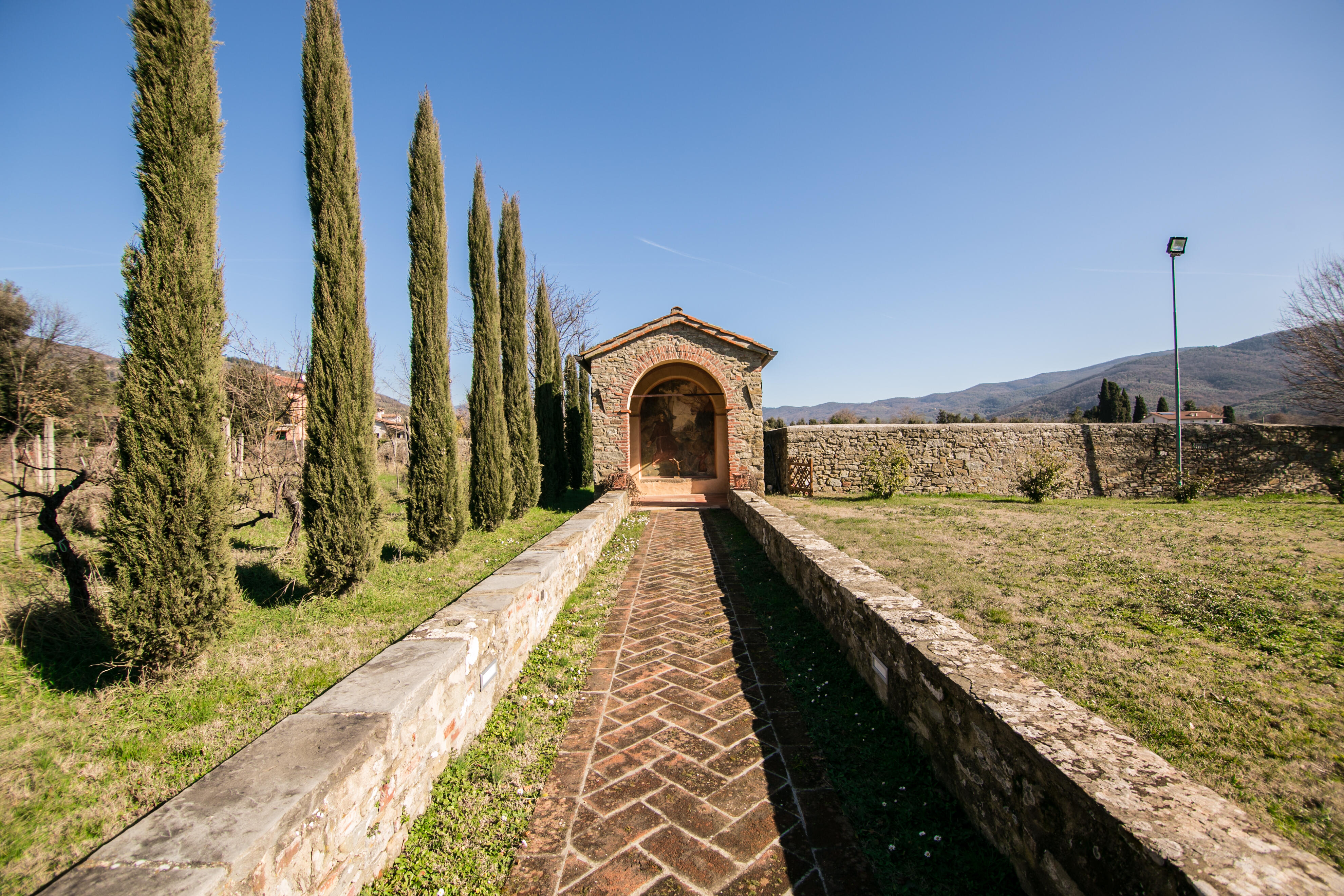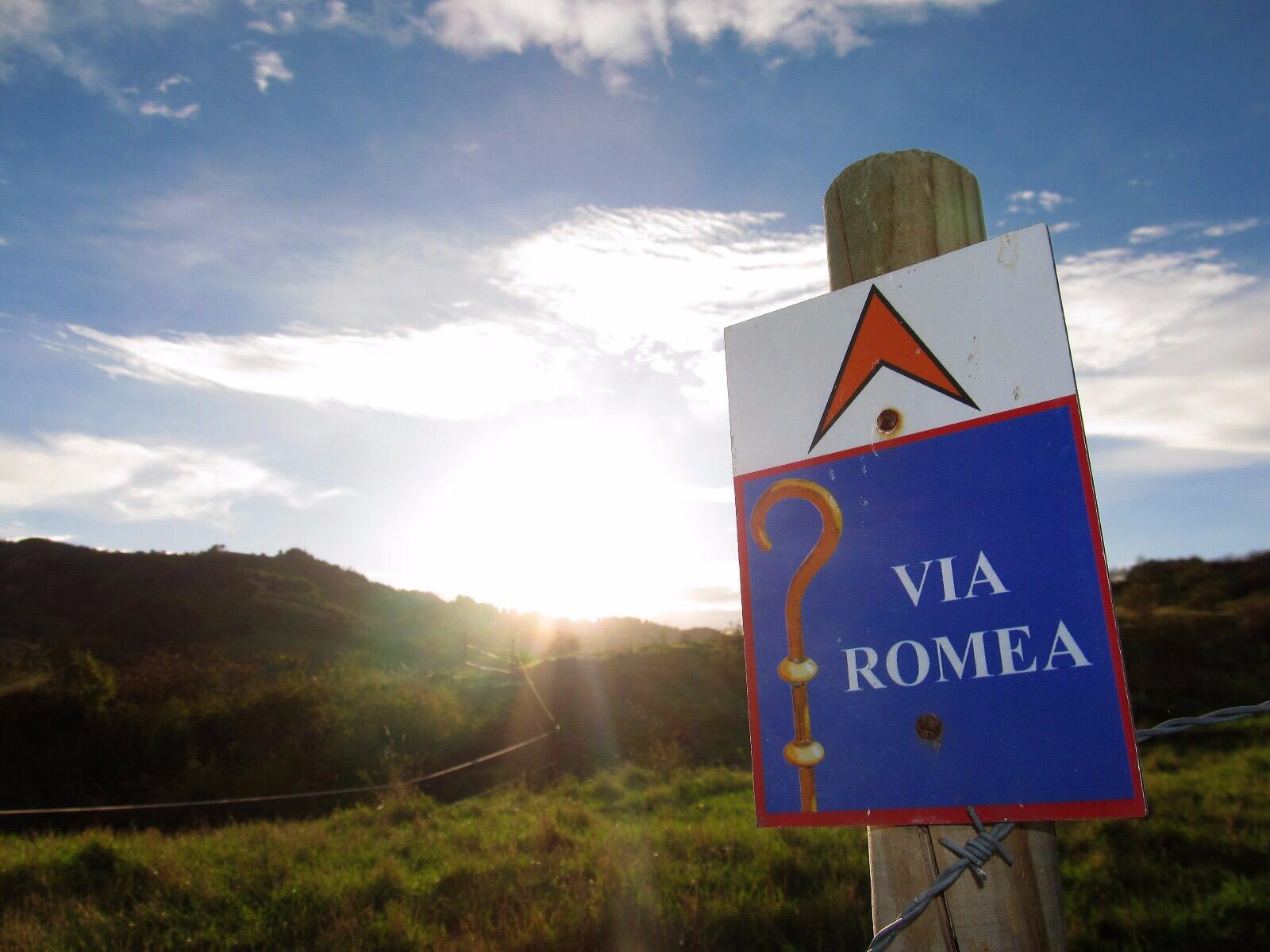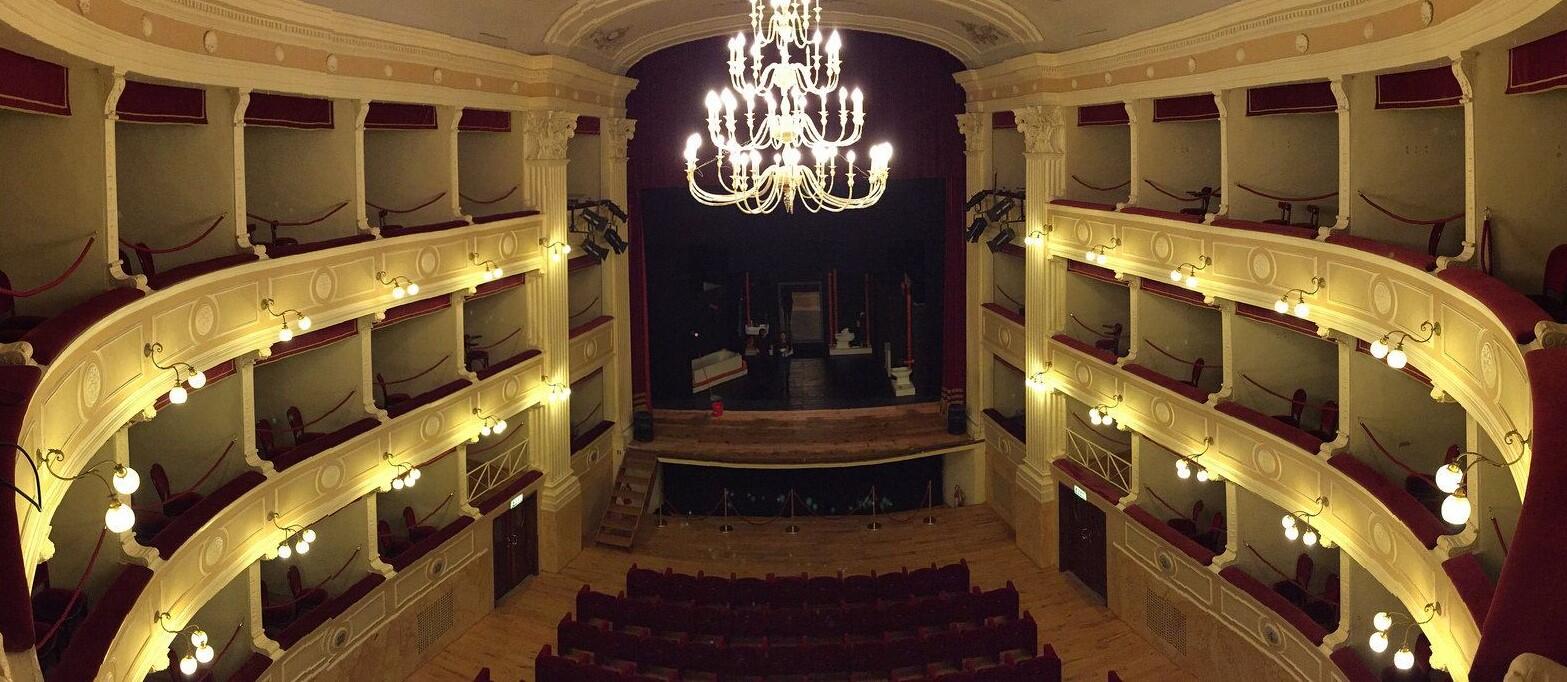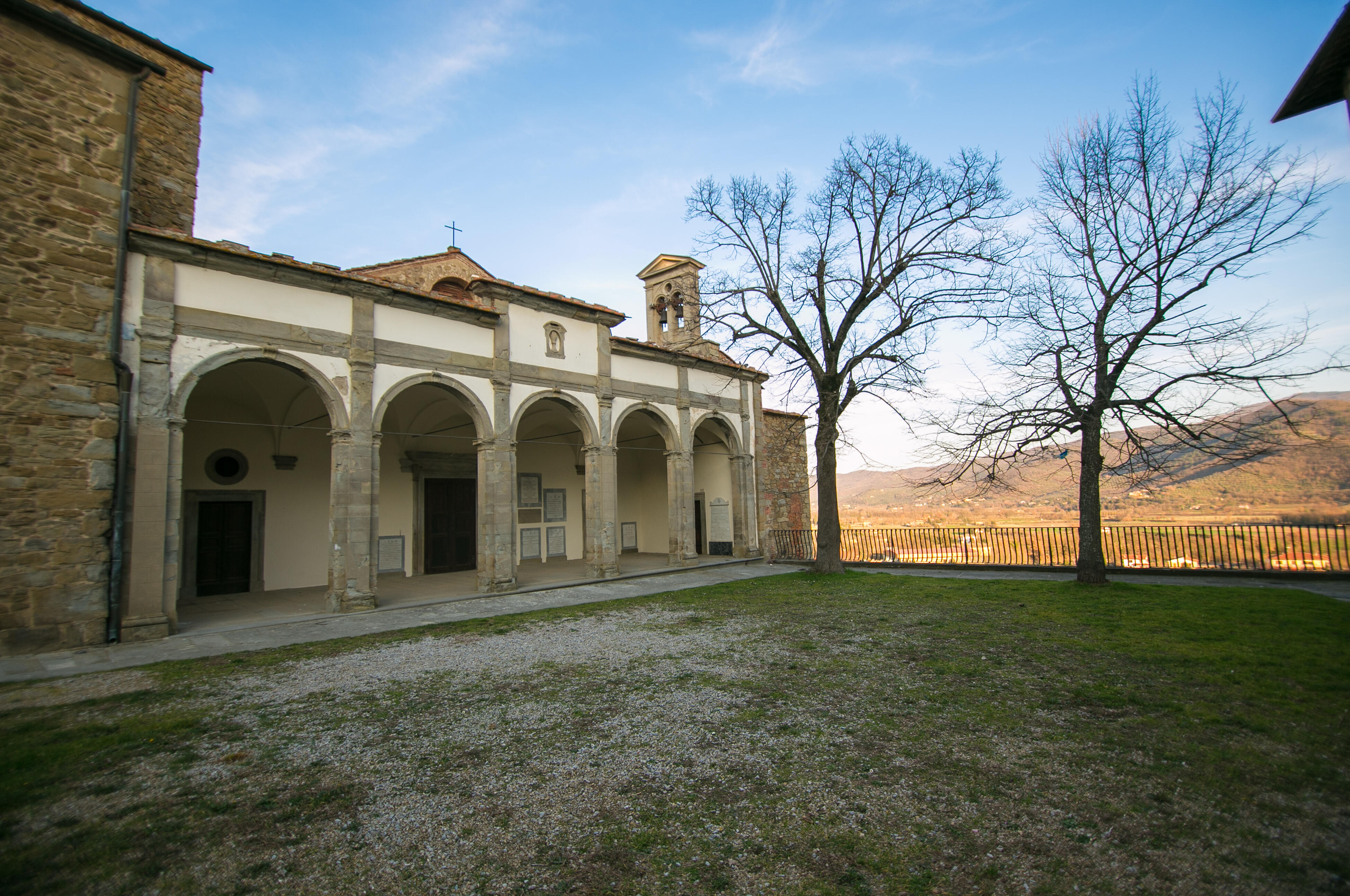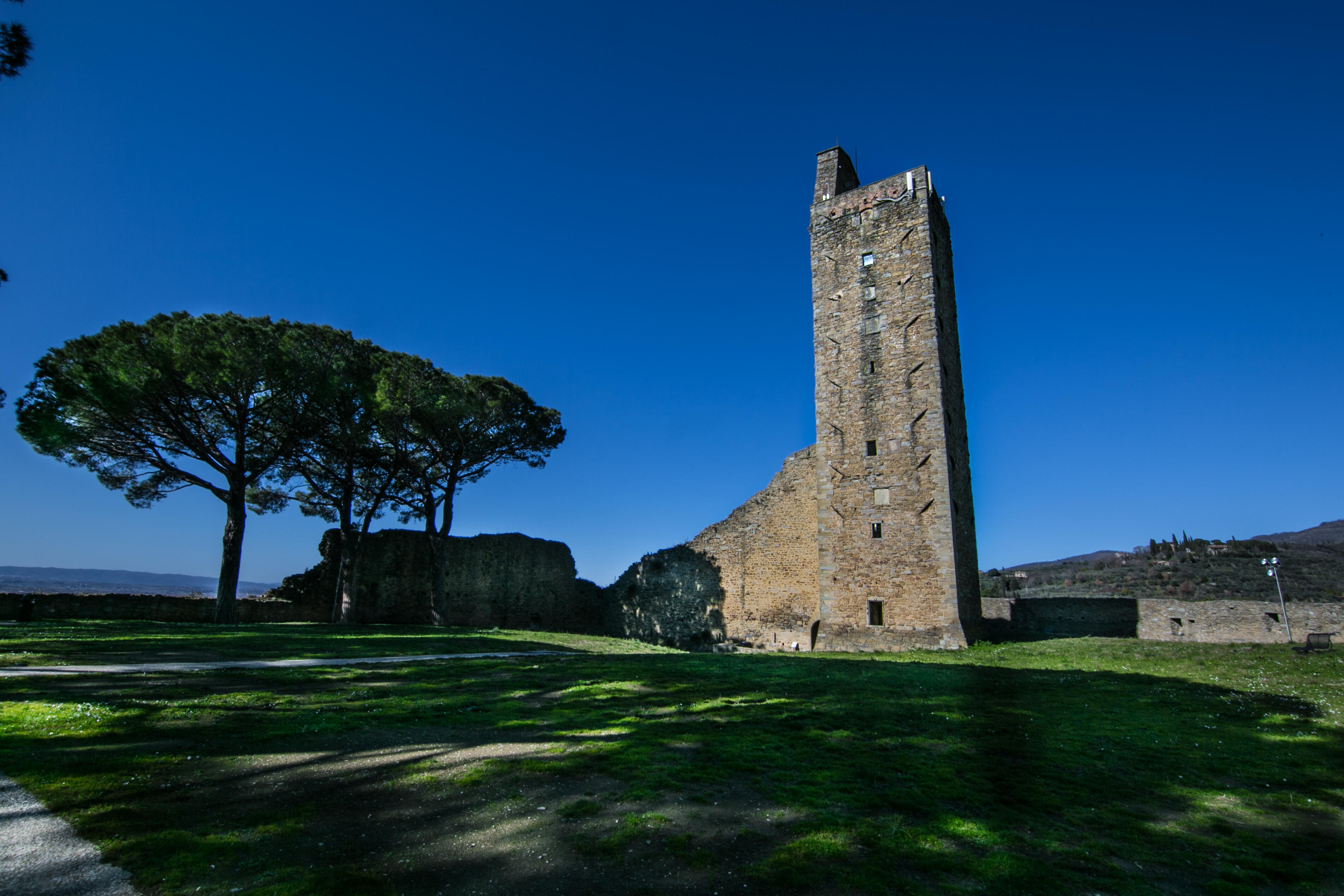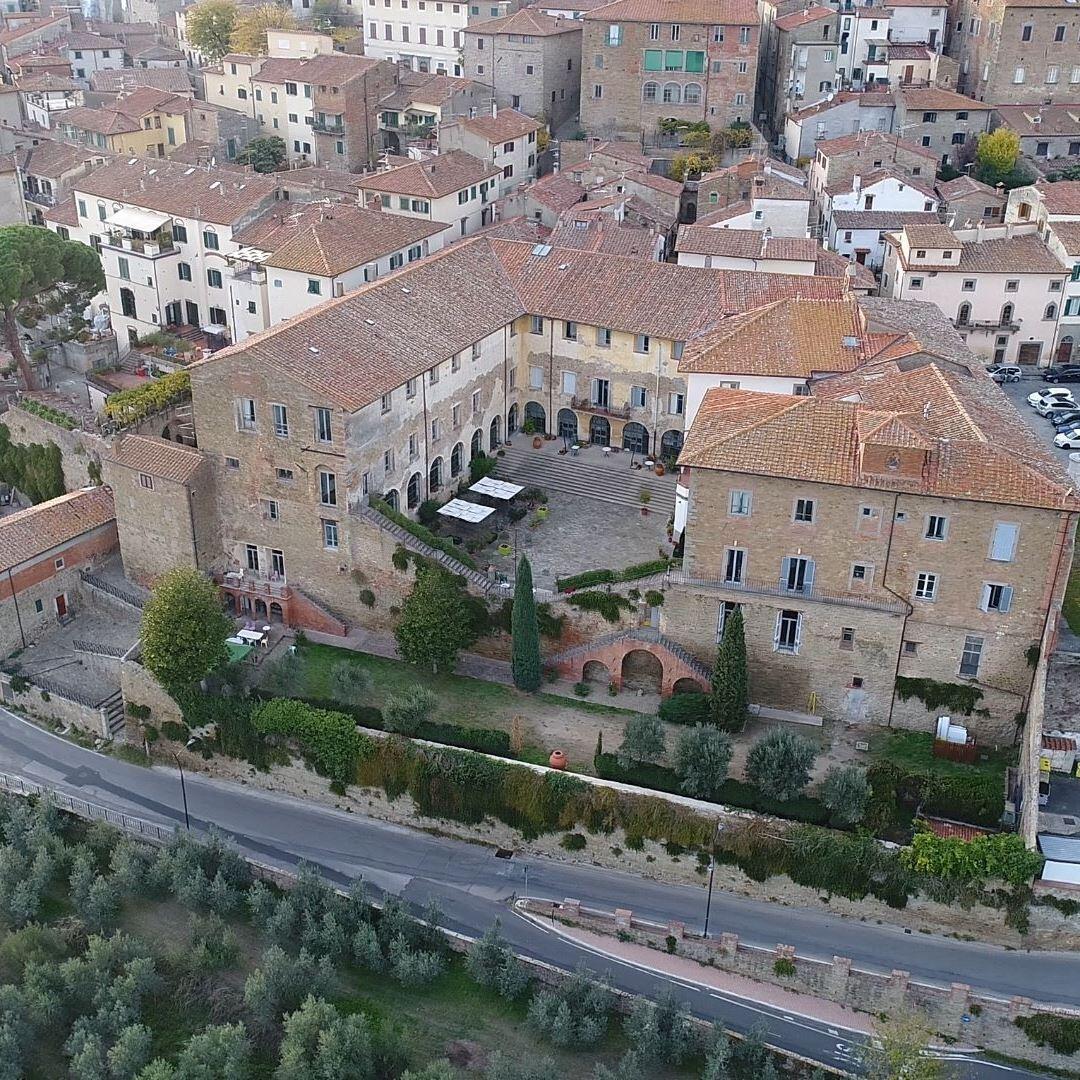POINT OF INTEREST
MONUMENTS
Porta Fiorentina
Porta Fiorentina, which constitutes the entrance to the northern area of the historic centre, is located in what, in ancient times, was called Terziere di Mercato.
When the Pisans, between 1250 and 1260, extended their city walls to encircle the area known as Colle del Paradiso, now Piazza San Francesco, they also created the opening then known as Porta del Mercato or Porta Santa Maria.
This access point consists of a double gate: past the outer gate, a large ashlar sandstone portal described in historical records as the "external gate of Santa Maria," there's an inner opening with three arches topped by a rather worn image of Saint Michael, the city's patron saint. On the wall of the gate facing Corso Italia, under a gabled roof, there's a mid-19th-century fresco depicting the Immaculate Conception.
In this area, as outside Porta Sant’ Angelo, there was also an enclosure (a "serraglio") to compel travelers to pay customs duties, and "caselle" (small shelters) for guards and toll collectors. To defend the northern section of the city walls, there were several towers, one of which, the Torre degli Assi, is currently occupied by a bar. This structure was so named because it was surrounded by scaffolding built with large wooden planks, of which today only the large stone corbels that supported them remain.
The tower, originally more imposing than it appears today, was lowered in the 18th century and covered with a single-pitched roof. Interventions from this period also included the demolition of the adjacent city walls, aimed at recovering building materials and creating overlooks and terraces facing the valley "to have light and see the view."
Images that tell a story
Welcome to our gallery: a collection of images that tell moments, emotions, and details that often escape words. Each shot is a fragment of history, a memory to share, a perspective to explore. Browse and let yourself be inspired.
Contacts
Below are our contacts through which you can reach us:
Share the page
Below are our references through which you can contact us:


 ITA
ITA